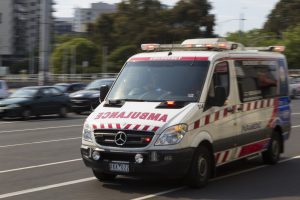 Australia’s first mobile stroke unit has made great inroads into meeting its objective just six months down the track – to save time and brain.
Australia’s first mobile stroke unit has made great inroads into meeting its objective just six months down the track – to save time and brain.
Updating delegates on the first day of the ANZAN conference in Darwin, Professor Stephen Davis, Director of the Melbourne Brain Centre at the Royal Melbourne Hospital, said the Melbourne Mobile Stroke Service (MSU) launched in November last year but still had to prove itself.
The MSU service, which comprises a Mercedes™ Sprinter-5 Chassis and a CereTom™ 8-slice portable CT scanner, runs from 8am to 6pm, Monday to Friday, picking up patients with a suspected stroke within six hours from the event who live within a 20 kilometre radius of Royal Melbourne Hospital.
Crew typically involved a nurse, radiographer, two paramedics and a neurologist, although the service was exploring the use of Google glasses to allow the neurologist to manage the patient remotely.
Professor Davis told delegates that the service typically receives six to 10 calls a day although only 1 in 4 of the calls turn out to be stroke. So far, the service has treated 242 patients, 25 of whom were treated with tPA while 21 were referred for endovascular thrombectomy.
Superficially at least, the time metrics did not look that impressive, he said. For instance, time from scene to CT was 21 minutes, the median scene to thrombolysis time was 40 minutes and to date around 10 percent of patients have been treated within the ‘golden hour’.
“It’s very interesting, when you actually go to the patient’s house and find them wedged between the bed and a wall to actually get them out of the house and get them into a position where they can have a CT scan is not as easy as when they come to the emergency department on a stretcher,” he said.